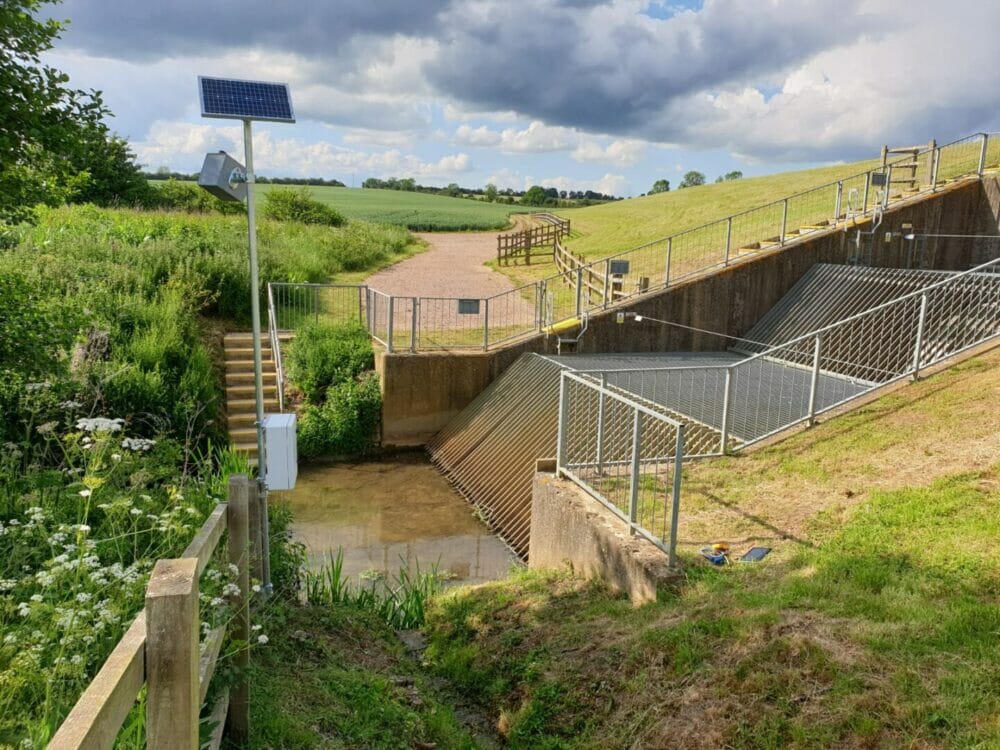Following a competitive tendering process, Meteor Communications has been awarded a four-year contract by the Environment Agency to significantly expand their estate of low-power remote image collection cameras. Installed at strategic locations, the cameras will provide critically important information on the status of water management assets involved in reducing flood and coastal risk.
Under the contract, Meteor will provide the Agency with hourly images of remote assets such as grilles, screens, storm overflows, channels, culverts, pumps, gates and automated structures. The images will be captured by Meteor’s remote cameras (MRC) and delivered to Agency staff via the company’s web-based MeteorCloud service.

This award builds on previous contracts under which Meteor has installed around 1,500 remote cameras for the Environment Agency. Images from the MRC cameras provide Agency staff with an early warning of potentially harmful or dangerous conditions. For example, the immediate visual confirmation of rising water levels in storm drains or blocked trash screens allows a rapid and timely response. Equally, for asset management regular real-time images from site reduces the number of site visits, saving time and money. It has been estimated that by avoiding unnecessary journeys, each MRC camera saves around 0.5 tonnes of carbon dioxide emissions per year, and each camera’s financial payback is just 9 to 10 months.
Explaining the particular advantages of the MRC cameras, Meteor’s Managing Director Matt Dibbs says: “Our main focus in the development of these cameras was the ability to operate unattended in remote locations where normal power and communications may not be available. The MRC cameras therefore operate on ultra-low power, requiring just a small battery and a solar panel for year-round operation, anywhere in the UK. This dramatically reduces installation time and cost.
“Transmitting single high-resolution images, the cameras are able to operate via any mobile network connection. This means that high-quality, real-time images can be provided even in areas with poor mobile coverage, and with an extremely robust design, they are suitable for long term, unattended operation with minimal maintenance.”
In addition to the scheduled images, users are able to request additional pictures via the MeteorCloud® web portal, directly by SMS or email. This includes requests for an enhanced (faster) polling mode for a set period of time, which can also be prompted automatically – by a connected water level sensor for example. This means that rising water levels can cause the camera to raise an alarm with an accompanying image to provide visual confirmation of conditions.
To ensure that the system is resilient and futureproof, Meteor also provides full integration of the MRC camera system (via the Meteor Data Centre) into the Environment Agency’s current SCADA platforms and future visualisation systems.
Andrew Pearce, the Environment Agency’s deputy director for asset management systems, said: “Our new flood defences have already better protected 314,000 homes since 2015 and we’re going further, delivering a record £5.2bn investment to protect hundreds of thousands more properties.
“Working with Meteor Communications and these new remote cameras will help us to maintain defences to ensure communities remain protected, as well as save money, improve efficiencies and lower the carbon footprint of our operations.”
Meteor Communications currently has around 2,500 MRC cameras operational in the UK.
MRC camera systems are in use across the Water Utilities sector, Local Authorities and Network Rail for remote operational and asset management purposes.
For further information, please contact:
Meteor Communications Ltd.
Unit 12, Bridgegate Centre
Martinfield
Welwyn Garden City
Herts. AL7 1JG
England
Tel. +44 (0)1727 8 999 90
Email: [email protected]








